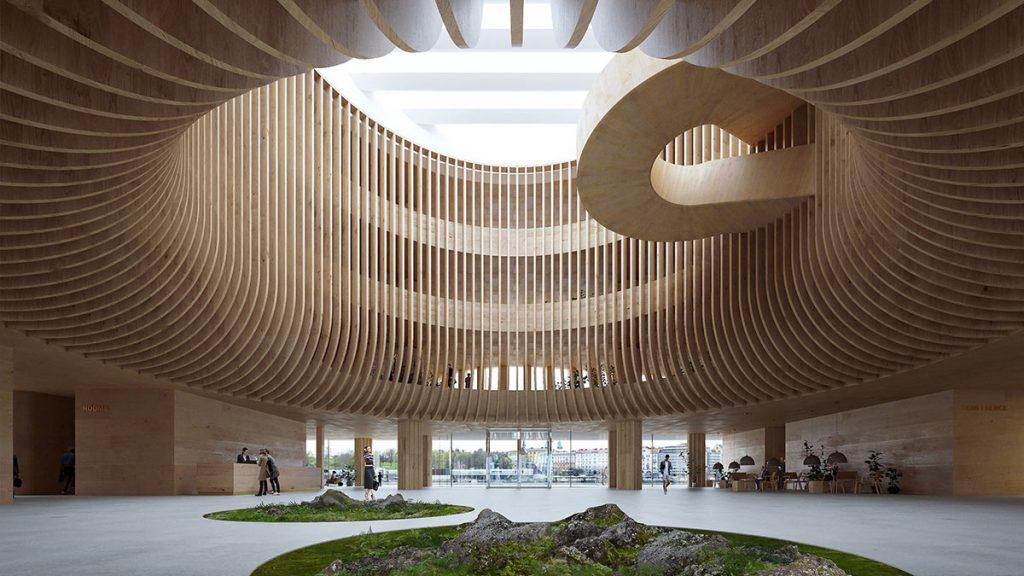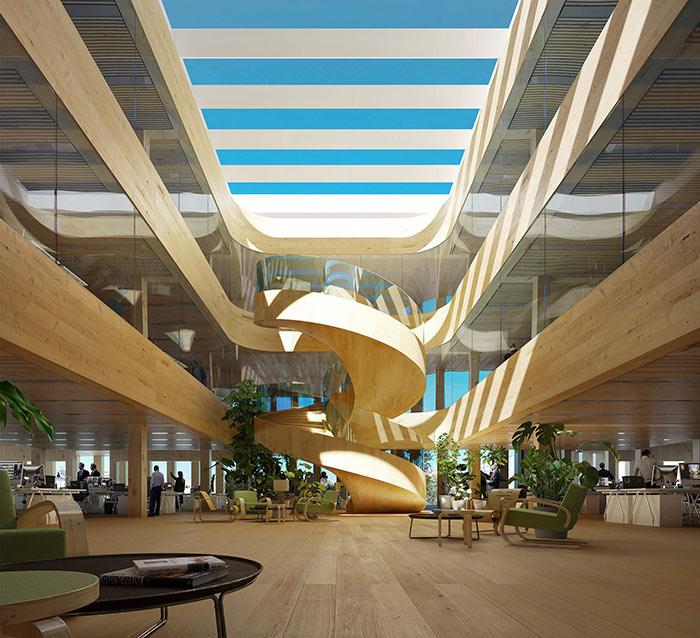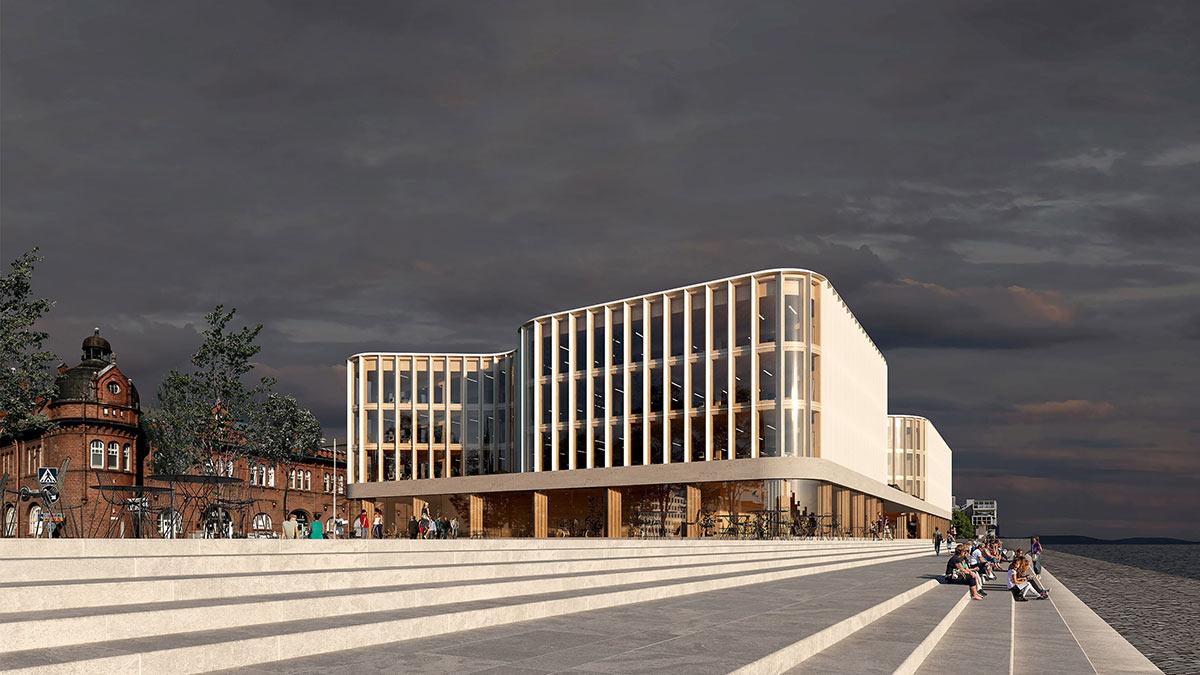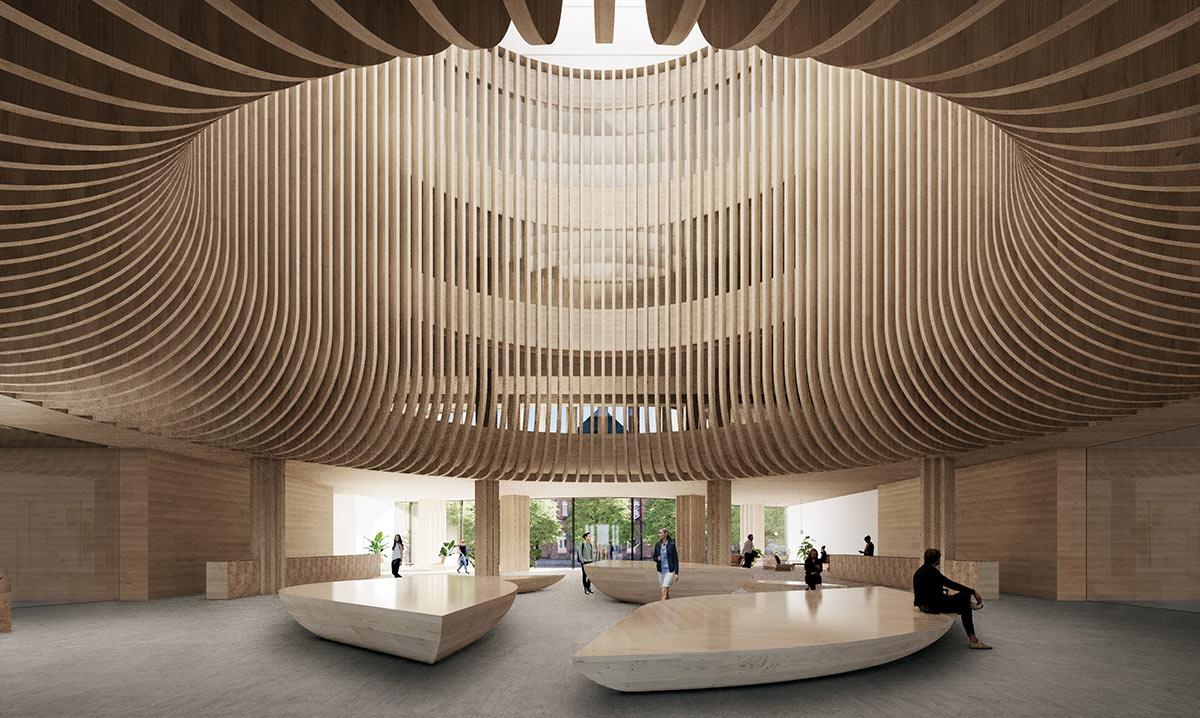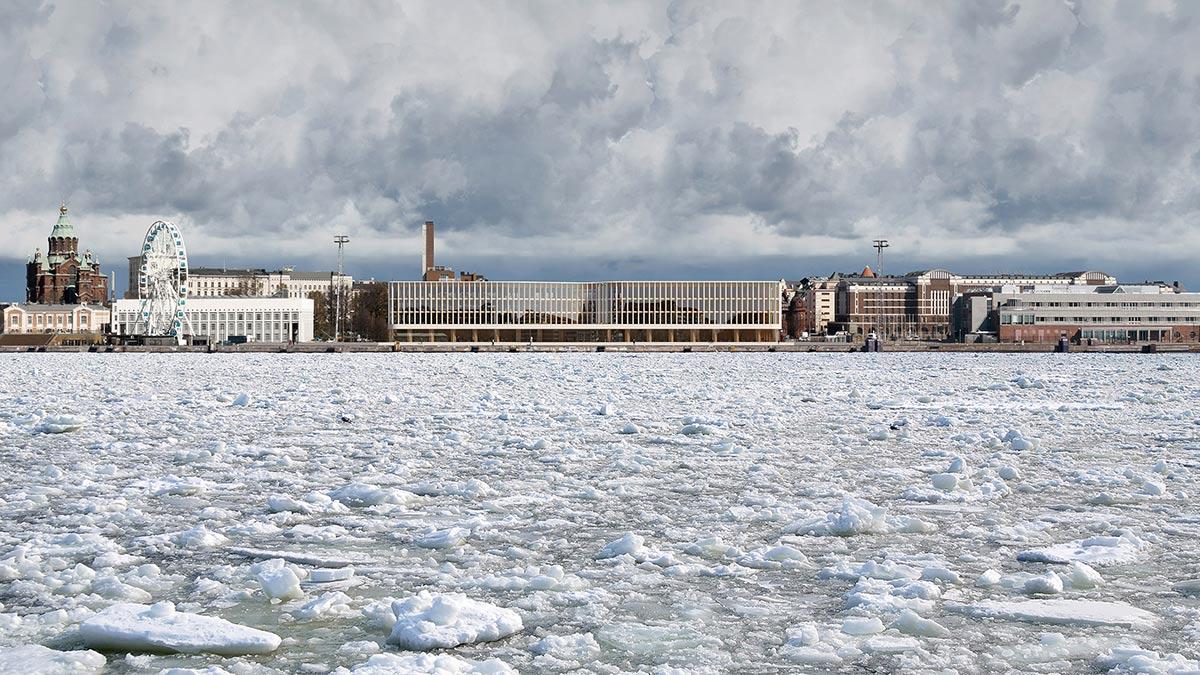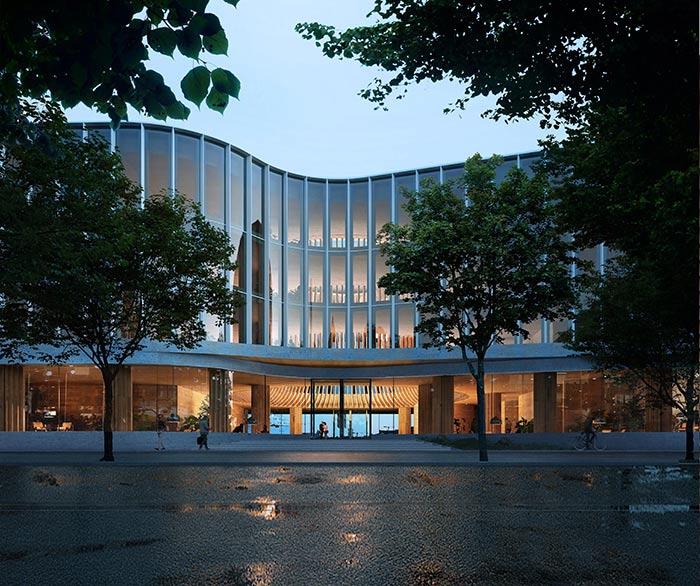A carbon-free head office
Stora Enso, the second largest forestry company in the world, will soon move into their new headquarters. The Katajanokan Laituri complex is set to be both a masterpiece of Finnish timber construction – and also climate neutral. Its aesthetics are reminiscent of grandmaster Alvar Aalto.
Paper and packaging manufacturer Stora Enso is one of the pioneers in a new generation of circular products, all of which are based on the renewable raw material wood. More precisely, on the wood component lignin, which is what ensures the rigidity of cell walls in trees. Today, an estimated 50 million tonnes of lignin are produced annually worldwide as a waste product in paper manufacturing. Instead of burning lignin, the Finnish-Swedish company uses it to make not only bio-based plastics, resins and binders, but also hard carbon for the renewable batteries of tomorrow.
The new company head office – called Katajanokan Laituri – at the southern edge of the Port of Helsinki needed to match this commitment to green innovation. For the construction of the office complex with an integrated hotel, Stora Enso – the second largest forestry company in the world – launched its own architectural competition.
A masterpiece of Finnish timber architecture
The end goal was an office complex that is entirely carbon neutral, both in its construction and operation. To achieve this, the whole building is planned as a timber structure and uses only renewable energy sources. “To make this possible, everyone involved in the project had to commit to that goal from the outset,” explained the building contractor, who is aiming for LEED Platinum certification.
Both urban and natural, it is strong and serene on the outside, while its interior and materiality evoke the dense but tranquil atmosphere of a Finnish forest.
Anttinen Oiva Arkkitehdit Oy, architectural office
On top of this, the company wanted their new head office to become a new landmark in the Katajanokka port district as a masterpiece of Finnish timber architecture. According to the jury, Finnish architectural office Anttinen Oiva Arkkitehdit Oy more than met these high demands.
The design – called “Spring” – draws on an overall aesthetic concept that unites a certain formal rigour on the outside with an organic, Zen-like collectedness on the inside. “Both urban and natural, it is strong and serene on the outside, while its interior and materiality evoke the dense but tranquil atmosphere of a Finnish forest,” the architects’ description reads.
A nod to Alvar Aalto
The design strives to create a close connection between the built environment and the landscape around it. “The architecture embraces and elevates its surroundings. Through a powerful, but open and inviting gesture and presence, it re-activates its surroundings and the city’s waterfront,” according to the project information.
The architecture embraces and elevates its surroundings. Through a powerful, but open and inviting gesture and presence, it re-activates its surroundings and the city’s waterfront.
Anttinen Oiva Arkkitehdit Oy, architectural office
The architects want to establish a strong link with nature using biophilic design principles. In addition, they are looking to create a piece of architecture that stands testament to a clear identity and is both modern and timeless in one.
With this approach, the architects are paying tribute to Finnish grandmaster Alvar Aalto, who is considered one of the principal trailblazers of modernism and a pioneer of organic architecture. He saw all objects and buildings as living, claiming that you cannot treat them any differently to other biological entities, otherwise they run the risk of no longer fitting into the system, they become inhuman.
New public space on the waterfront
The jury was impressed by how the winning design took a sensitive approach to the historic buildings, stating that it blends in well with the block structure of Katajanokka, with the rounded corners of the building “connecting it with the historic storehouse and Art Nouveau architecture”.
Besides the enthusiastic response from the jury, the concept was also a hit with the general public, who were involved in the design process right from the start. When the major construction project opens, the residents of the Finnish capital will have a new public space available directly at the port. Two other features will be a small city park on the market square and a large terrace area for cafés and restaurants at the waterfront.
Climate-neutral investments
Besides Stora Enso and the hotel, other companies are able to rent space in the 16,000 square metre complex. The property is being developed by Finnish pension insurance company Varma, which has set itself the goal of having a climate-neutral investment portfolio by 2035. Varma has moved away from coal and oil and is instead investing in emission-free electricity and climate-neutral heating.
For the city of Helsinki, the real estate project not only marks the start of a new development area at the port, but also for timber construction in general, which is set to become an integral part of the city’s building strategy. “Development of Katajanokka aims to create active city space and we are delighted that we will be able to open up the Katajanokka waterside for citizens’ use,” Helsinki’s Green Deputy Mayor Anni Sinnemäki explained when construction started in 2021.
The Katajanokan Laituri project, scheduled to open in the summer of 2024, seems to be keeping to the premise set out at the beginning: everyone is pulling together.
Text: Gertraud Gerst
Visualizations: Varma
